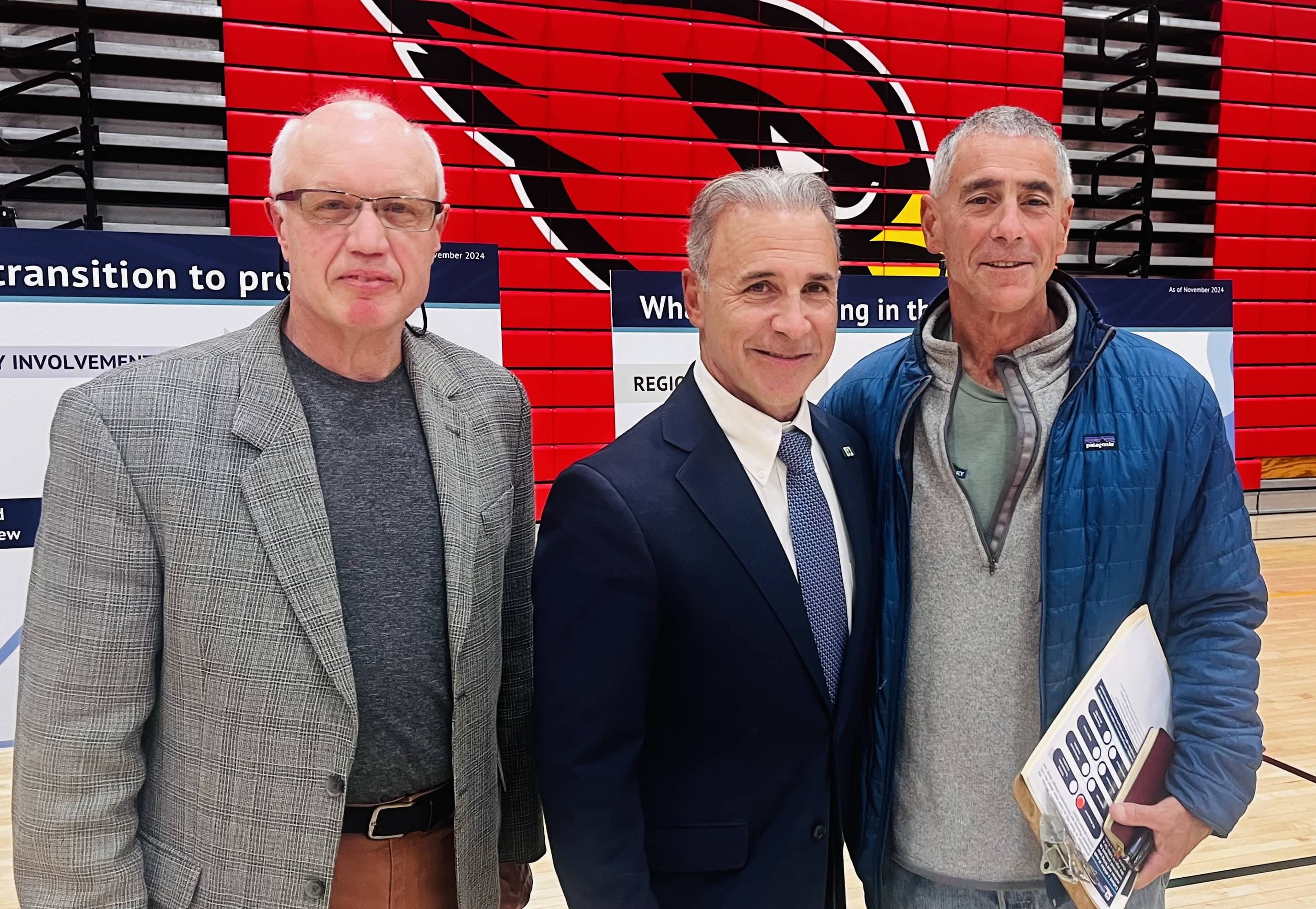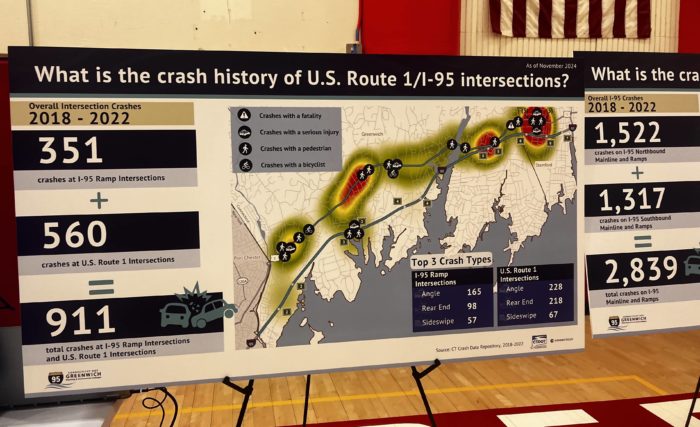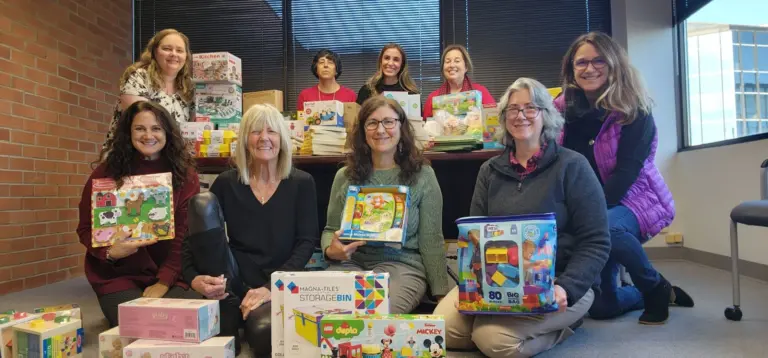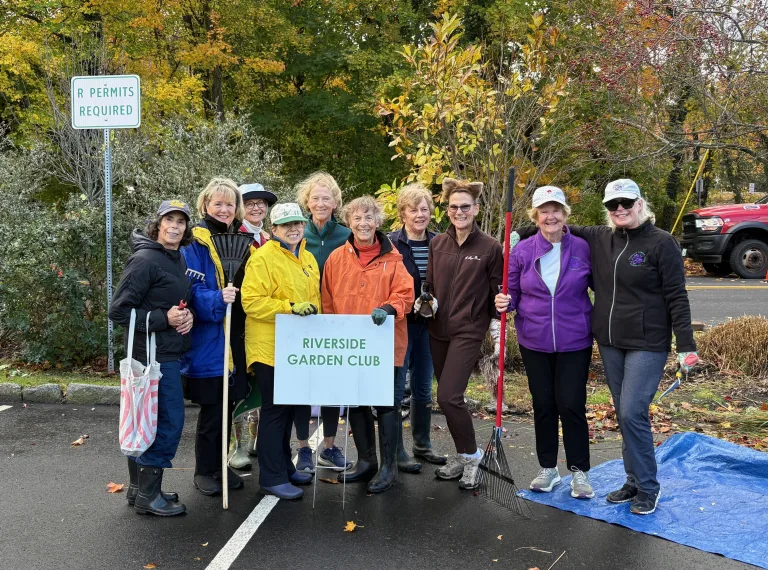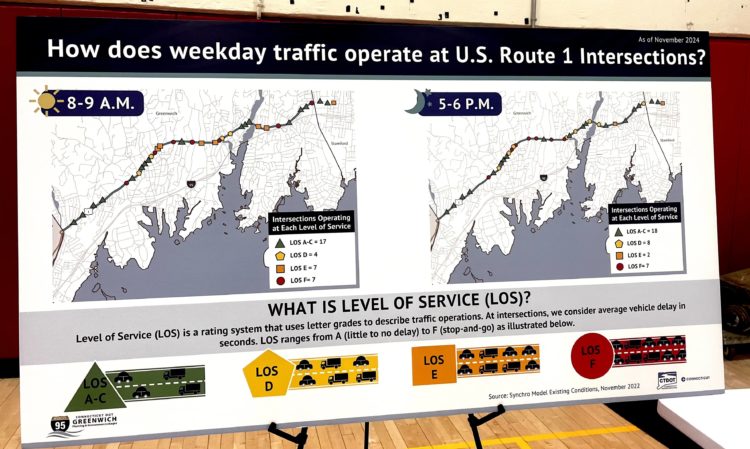
Greenwich took a significant step in addressing its growing transportation challenges during a public forum hosted by the Connecticut Department of Transportation (DOT). The event centered on the I-95 Planning and Environmental Linkage Study and the interconnected Route 1 corridor, both of which serve as critical arteries for local and regional travel. Residents, officials, and transportation experts gathered to discuss issues ranging from gridlock and air quality to pedestrian safety and multimodal transit options, with a focus on fostering collaboration between state and community stakeholders.
The forum emphasized community engagement, aiming to bridge the gap between technical studies and lived experiences. Kim Lesay, Bureau Chief of Policy and Planning at the DOT was in attendance. “I am always astounded every time I come to Greenwich,” Lae said, “It’s just such a beautiful area–the old, beautiful bridges, the neighborhoods, the winding roads.”
The meeting was an interactive opportunity. Attendees were invited to visit themed stations that addressed specific concerns such as noise pollution, hazardous intersections, and the safety of cyclists and pedestrians. The layout encouraged direct dialogue, enabling residents to share insights about localized issues that might not emerge from technical surveys or modeling alone. Noted Lesay, “it really helps us deliver a better product in the end to the community.”
At the heart of the discussion was the I-95 corridor, a vital but aging infrastructure designed for traffic volumes far below today’s levels. The highway, initially constructed during the Eisenhower administration, is a lifeline for commuters and freight but is now burdened with congestion levels that challenge its capacity to function effectively. Anecdotal evidence suggests the highway reached full capacity just three years after its completion, and today its traffic volume is believed to exceed that capacity several fold. The planning study aims to not only address these current pressures but also anticipate future growth in both population and vehicle use.
The forum highlighted the broader implications of transportation planning, particularly the connection between traffic issues and quality of life. Residents voiced concerns about aggressive driving, difficulty navigating local streets, and noise levels. Greenwich has long prided itself on its parks, schools, and amenities, but the escalating traffic challenges threaten to undercut these strengths.
The DOT’s efforts reflect a shift toward a more holistic approach to transportation planning. The agency is integrating safety and mobility improvements with a focus on multimodal solutions, recognizing that not all residents rely on cars. “we’re in a constrained area that was built a long time ago, so that is a big challenge,” remarked John Dean from the DOT, “But statewide, we’re looking at not just ways to get more cars through, but to other initiatives in the department that focus on improving Metro North and helping people.” Route 1, which runs through the heart of Greenwich, has been identified as a critical area for enhancements.
Local officials, including First Selectman Fred Camillo, emphasized the importance of state and municipal collaboration in tackling these issues, “we pride ourselves on having a great relationship with the state, various agencies and departments and this is another example of that.” With 169 municipalities in Connecticut competing for funding and attention, Greenwich must make a compelling case for why its transportation needs warrant prioritization. “I thank DOT and the state for coming down here, because it really does show what they look at, what the town looks at,” said First Selectman Camillo.
The forum also underscored the importance of long-term vision in transportation planning. While immediate measures can provide some relief, the larger challenge lies in designing infrastructure that can adapt to future needs.
For Greenwich, the event marked the beginning of a collaborative journey and underscored the importance of longterm vision in transportation planning. While immediate measures can provide some relief, the larger challenge lies in designing infrastructure that can adapt to future needs. No single meeting can resolve decades of transportation challenges, but the forum signaled a commitment to listening and responding to community concerns.
